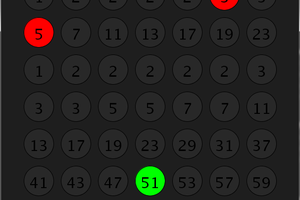Imagine...
You're sitting in bed reading. It's 10:00 PM. As you yawn and start to consider going to sleep your clock makes a soft "ding" and flashes "Teleconference, 7:30 AM" on its screen to let you know that if you don't go to bed in the next few minute you'll have trouble getting up for your 7:30 AM teleconference.
Your clock knows your schedule since it's hooked into your Google account. It also knows human physiology, including the typical length of human sleep cycles. It knows that humans feel far more awake when they are awoken in the middle of their REM cycle, as REM sleep is the lightest stage of sleep. It knows that humans can be awoken with very little stimulus during REM sleep.
While you sleep, your clock monitors a small, lightweight pulse meter you wear on your wrist. Using this meter it knows when you've fallen asleep.
Using the information it has - when you fell asleep and your calendar information - your clock can intelligently choose to awaken you when you're in the lightest stage of sleep. It will make sure you're awake by the time you've chosen, just like a normal alarm, but it might also wake you up before that time if you're in a light stage of sleep.
When it calculates a light sleep cycle will be approaching, the clock gently raises the brightness of a lamp plugged into it and begins playing a very soft "Beep, beep, beep". Once you've entered the lightest sleep cycle the clock will begin slowly getting louder and louder until you wake up.
After your pulse picks up and you get out of bed, it greets you -
"Good morning [your name], the weather forecast for today is calling for temperatures between 55 and 70 degrees Fahrenheit and a 60% chance of rain. Your first appointment today is at 7:30 - teleconference with [insert name]. You received [X] emails during the night while you were asleep. Have a good day."
This information is all mirrored on the screen on the clock.
 joss.steward
joss.steward


 treibair
treibair
 TheBestJohn
TheBestJohn
 Henry York
Henry York